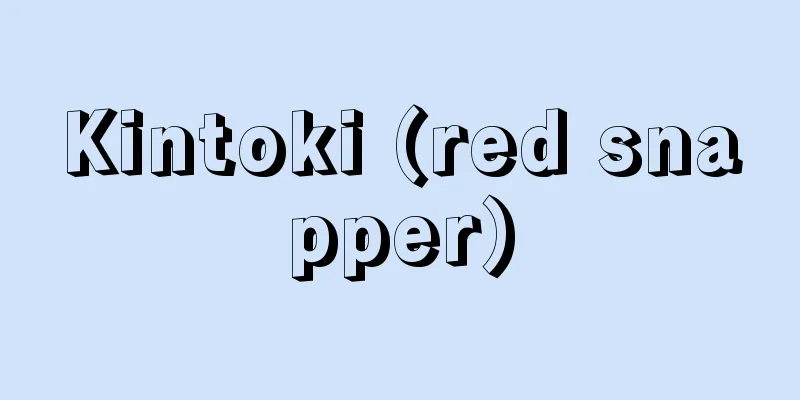Airborne operation - airborne operation

|
A type of land operation, an assault operation in which combat troops are dropped into a target area using aircraft and supplies are provided. There are two methods: direct landing using transport planes or gliders, and parachute dropping. The method using helicopters is called a heliborne operation and is distinguished from the other methods. Research into dropping troops by parachuting from aircraft began in various countries after World War I, and was actually used in World War II in Palembang by the Japanese army, the invasion of the Netherlands by the German army, and Sicily by the American army. Large-scale airborne operations using gliders and parachutes were also carried out during the Normandy landings. Airborne operations have the advantage of being able to significantly reduce the time it takes for troops to move and to send large forces to the battlefield in a short space of time. On the other hand, it is difficult to simultaneously drop heavy equipment, and if the timing, location, and supply plans are not properly selected, the troops sent in will be isolated. The basic tactics of airborne operations include early linkage operations, assault operations, area denial operations, independent operations, and special operations. Early linkage operations involve quickly linking up with friendly ground forces and supporting their actions. Assault operations involve destroying individually identified targets in a short period of time. Area denial operations involve halting enemy combat operations at the landing site for a relatively long period of time. Independent operations involve securing airborne support, and special operations involve collecting information, inciting the public, and rescuing personnel. [Kenichi Aoki] [Reference] |Source: Shogakukan Encyclopedia Nipponica About Encyclopedia Nipponica Information | Legend |
|
陸上作戦の一つで、航空機を使って目標地域に戦闘部隊を投入するとともに、補給支援を行う強襲作戦。輸送機やグライダーを使って直接着陸する方法と、パラシュートによる降・投下による方法がある。またヘリコプターを使うものは、ヘリボーン作戦とよばれて、区別されている。航空機からの落下傘降下による兵力投入の研究は、第一次世界大戦後に各国で開始され、第二次大戦では日本軍によるパレンバン、ドイツ軍によるオランダ侵攻、アメリカ軍によるシチリア島などで実際に使用された。またノルマンディー上陸作戦においても、グライダーや落下傘による大規模な空挺作戦が繰り広げられた。 空挺作戦は、部隊の移動時間を大幅に短縮できるとともに、短時間で大規模な部隊を戦場に送り込むことができるという利点がある。反面、重装備などの同時投下がむずかしく、時期や場所の選定、補給計画がしっかりしていないと、送り込んだ部隊が孤立してしまう。 空挺作戦の基本的な戦法には、早期提携作戦、襲撃作戦、地域阻止作戦、独立作戦、特殊作戦がある。早期提携作戦とは、速やかに味方地上部隊と提携させ、地上部隊の行動を支援する。襲撃作戦は、個別に特定した目標を短時間で撃破する。地域阻止作戦は、降下地点で比較的長時間、敵の戦闘行動を封じる作戦行動。独立作戦は空挺補の確保、特殊作戦は情報の収集や民衆の扇動、人員の救出などを行うものである。 [青木謙知] [参照項目] |出典 小学館 日本大百科全書(ニッポニカ)日本大百科全書(ニッポニカ)について 情報 | 凡例 |
Recommend
Blaschke, W.
...After this, in the 19th century, O. Bonnet (18...
Handayu-bushi
A school of Edo joruri. It was founded by Edo Han...
Shoren-in style
This school of calligraphy was founded in the Nan...
Aelia Eudoxia
?‐404 Wife of the Eastern Roman Emperor Arcadius. ...
Salt - Shio
〘noun〙① A substance with a salty taste. Made from ...
Philodendron - Philodendron
A cold-intolerant vine of the Araceae family (APG...
Italian Canna - Italian Canna
…Ornamental cultivars of canna are the result of ...
Pragma
...America's most representative philosophy. ...
Udonga flower - Udonga flower
...In Buddhist scriptures, this word is commonly ...
Conversos (English spelling)
In Spanish, it means "proselytes." In Ib...
Kokoro - Heart
A full-length novel by Natsume Soseki. It was ser...
Aglaozonia - Aglaozonia
...In late spring, dark brown wart-like protrusio...
Innocent Passage - Mugaitsu Ukou
Ships are permitted to freely navigate the territo...
Pavilion
〘noun〙 (pavilion)① A temporary building used for e...
Gau - Gau
...However, the clan system was already in the pr...









